COP28
Climate change Goal on Adaptation framework still a bone of contention between Global South and North
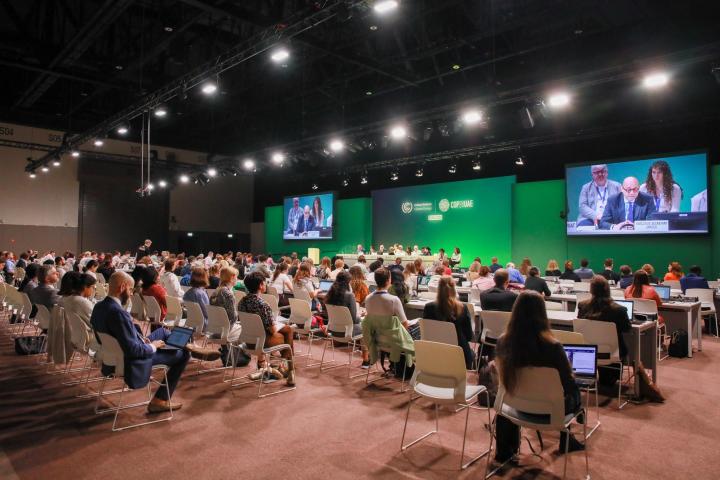
‘It’s about implementation — not making another plan to make a plan,’ said climate scientist Christopher Trisos about one of the main texts being negotiated at COP28, in which there is pushback from the Global North on targets that will have financial implications.
‘This is a major moment for adaptation, if not the biggest one since the Paris Agreement in 2015,” said Christopher Trisos, a senior researcher at the African Climate and Development Initiative at the University of Cape Town, and part of the SA delegation at the UN Conference of the Parties (COP28) in Dubai.
This year’s COP28 ends on Tuesday, 12 December, and one of the three main texts, the Global Goal on Adaptation (GGA), is still being hotly negotiated.
The GGA is part of the landmark Paris Agreement that was established at COP21 in 2015 to “enhance adaptive capacity, strengthen resilience and reduce vulnerability to climate change”.
The problem is — unlike the temperature goal in the same Paris Agreement, which aims to restrict global warming to well below 2°C above pre-industrial levels, preferably 1.5°C — the adaptation goal didn’t have enough mechanisms to implement finance and hold countries accountable, and developing countries were upset about this.
So, two years ago at COP26 in Glasgow, the Glasgow-Sharm el-Sheikh work programme on the GGA was established, giving countries two years to work on a framework that will “operationalise” and allow better implementation. This year’s COP is the deadline to deliver that framework for action.
The GGA will deliver a playbook for adaptation investments and progress through the 2030s and beyond.
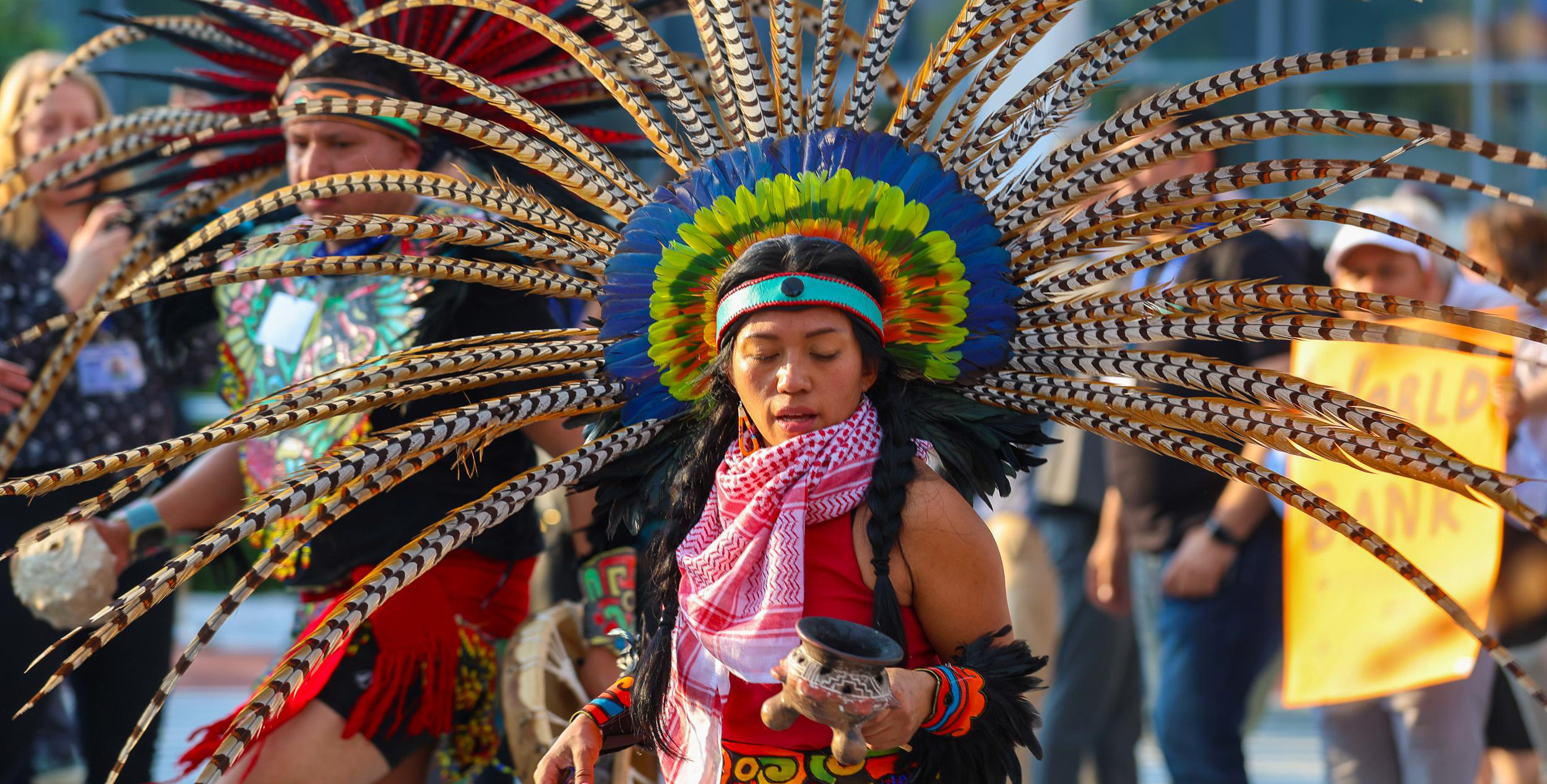
A dancer from the Mexica Indigenous people of Mexico performs to honour ancestors missing or murdered through environmental exploitation at COP28 in Dubai. (Photo: IISD / ENB | Mike Muzurakis)
We need to adapt
The GGA is important because even though humanity is trying to keep global warming to below 2°C since pre-industrial levels (ideally 1.5°C), there’s a lot of climate change that has happened already, and a lot more that’s going to happen.
Taking an average from 2013 to 2021, the world has warmed by 1.15°C since pre-industrial levels, according to the Intergovernmental Panel on Climate Change (IPCC). This year, the 1.5°C limit was breached on more than 80 days.
Trisos told Daily Maverick that the science is clear: even if humanity begins to rapidly reduce emissions from today, the planet will keep warming for the next 15 to 20 years because carbon dioxide stays in the atmosphere for some time.
“And so in that time, there’s a bunch of unavoidable risks, and we’ve got to adapt to them,” said Trisos, who was also the coordinating lead author of the Africa chapter of the IPCC’s sixth assessment report, Climate Change 2022: Impacts, Adaptation and Vulnerability.
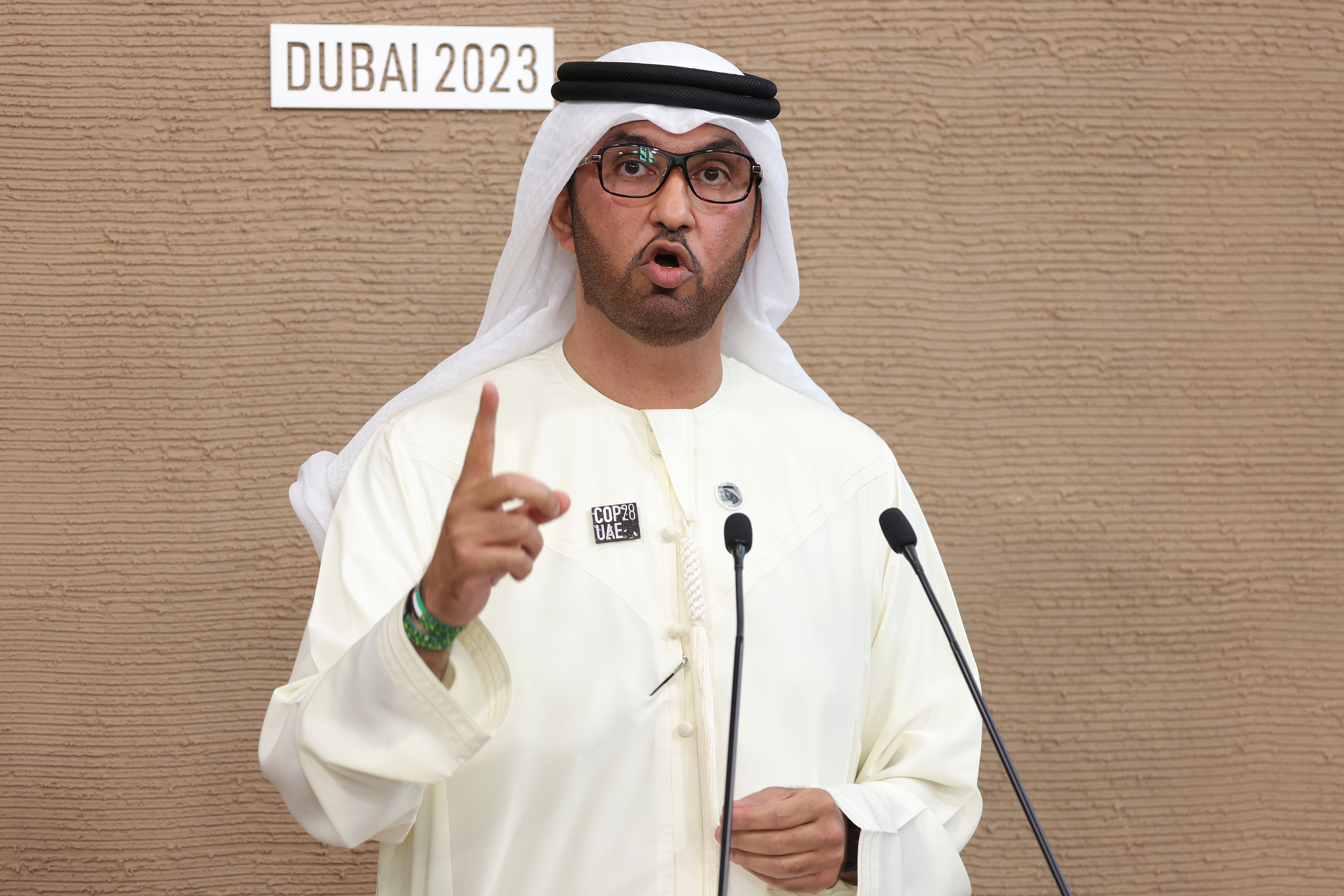
Sultan Ahmed Al Jaber, president of the COP28 UNFCCC Climate Conference, speaks to the media on 10 December. (Photo: Sean Gallup / Getty Images)
Trisos explained that adaptation is about being less vulnerable to the impacts that are already happening and the risks that we know await in the future.
Laura Pereira, an associate professor in sustainability transformations and futures at Wits University’s Global Change Institute, who is also at COP28, said: “We know we need enhanced adaptation because no matter what kind of mitigation measures we put in place now, we’re still going to have to adapt to the threats of climate change.
“We’re already starting to see the impacts of climate happening around the world in terms of heat and flooding events, drought, et cetera.”
What does adaptation look like?
Several theme targets are being negotiated in the GGA draft text, including water, food, health, ecosystems and biodiversity, human settlements and infrastructure, and livelihoods.
Under the theme of infrastructure, in South Africa this could entail considering climate change impacts and future risks in the design and planning of infrastructure, such as not building in floodplains, building better drainage systems in the face of floods and having better insulation in informal settlements to deal with heat.
Climate adaptation in health could entail universal vaccine coverage for people who are exposed to climate-sensitive infectious diseases — the big ones in Africa are dengue and malaria.
“When people think this isn’t feasible, it’s important to remember that the World Health Organization has already approved two vaccines for preventing malaria in children,” Trisos said.
Another example, based on IPCC scientific assessment, is building hospitals to be climate resilient, which could feature air conditioning powered by renewable energy in hospital wards, having backup power and building hospitals that are protected from flooding.
In terms of water, Trisos said adaptation could mean having better ecosystem-based drainage systems that can help protect people and infrastructure from floods.
In terms of food, adaption could include implementing drought-resilient crops or climate-smart irrigation projects.
Read more in Daily Maverick: From hardier goats to flood resilience — how climate finance helps communities adapt to environmental hardship
Trisos said South Africa, like most of the world, has many plans for adaptation.
“So far, most adaptation action has been planning, and this decade it is time for implementation.
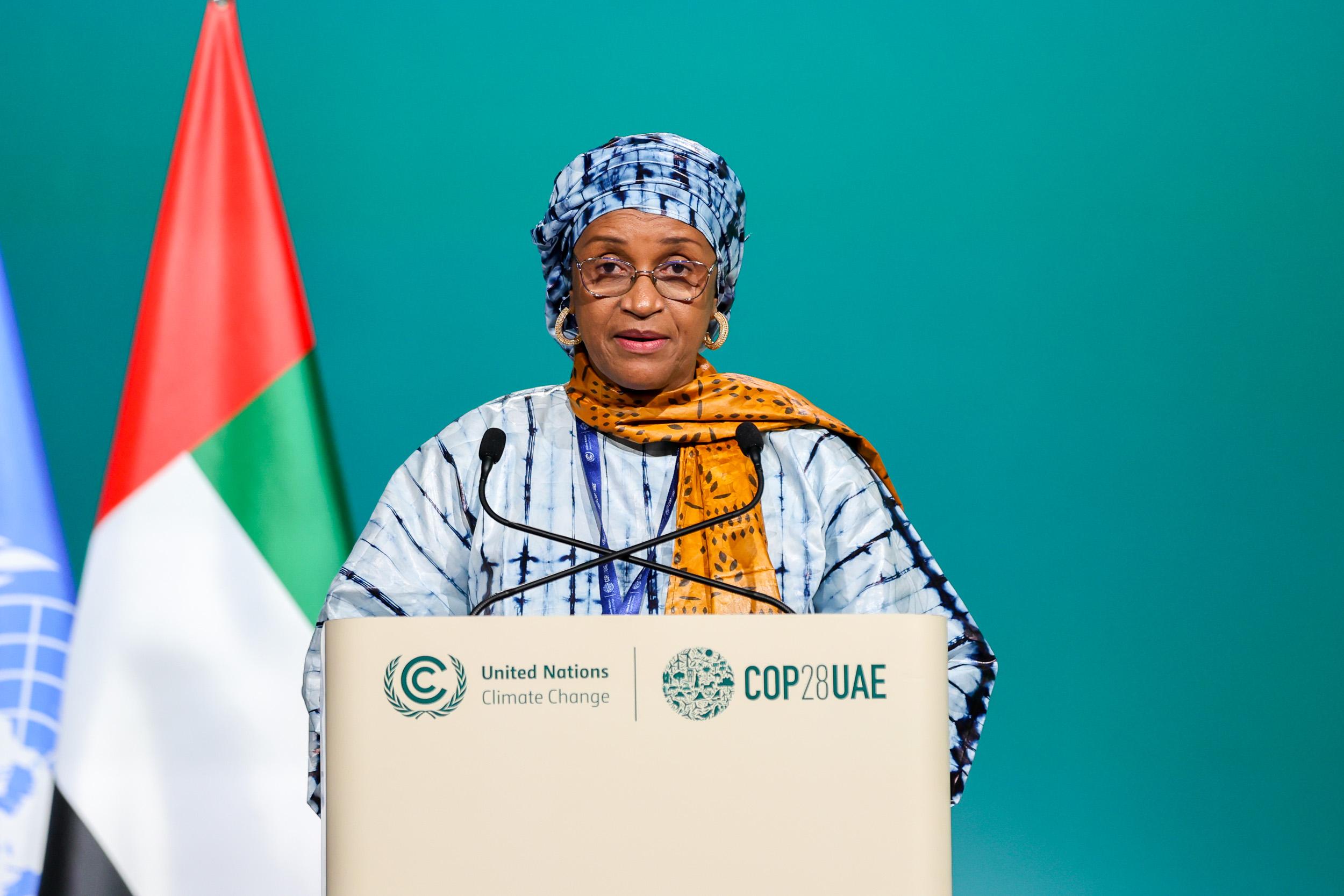
Safiatou Diallo, Guinea Minister of Environment and Sustainable Development. (Photo: IISD / ENB | Mike Muzurakis)
“That’s where this global goal on adaptation is so important to have these targets, because it’s about implementation — not making another plan to make a plan.”
The two main obstacles impeding implementation have been financing, and when there is enough money, too much red tape to access it.
The UN Environment Programme’s (Unep’s) 2023 Adaptation Gap Report estimates the costs of implementing adaptation priorities in developing countries at $387-billion a year from 2021 to 2030.
This cost is 10-18 times bigger than what international public finance has put down historically — with adaptation finance flows to developing countries declining by 15% in 2021, to about $21-billion.
Read more in Daily Maverick: Big shortfall in climate funding needed by developing countries is ‘hugely worrying’ – UNEP
Pereira said that while $387-billion a year sounds like a lot of money, it is a drop in the ocean when you consider that oil profits are $3-billion a day and the EU’s fossil fuel subsidies increased to €123-billion in 2022.
“If we’re able to make so much money from the problem, surely we can commit more finance to the solution,” said Pereira.
How COP28 could help with implementation
If the GGA text can articulate clear targets and outcomes for implementing adaptation, such as ending climate-related mortality by 2040, “it sends a clear political signal that that’s something countries around the world want to do, and then helps align financial resources and policies to achieve that globally”, Trisos said. This would help bring in other sources of funding like philanthropy, the private sector, development aid and local governments, who align their plans and actions with these global targets.
“If you have a target like this, globally, there’s been a lot of pressure on developed countries to provide sufficient finance for developing countries to meet those targets,” Trisos said.
An ideal outcome for this framework would be to achieve the theme targets, set policy targets and then inside the framework, a commitment for finance flows.
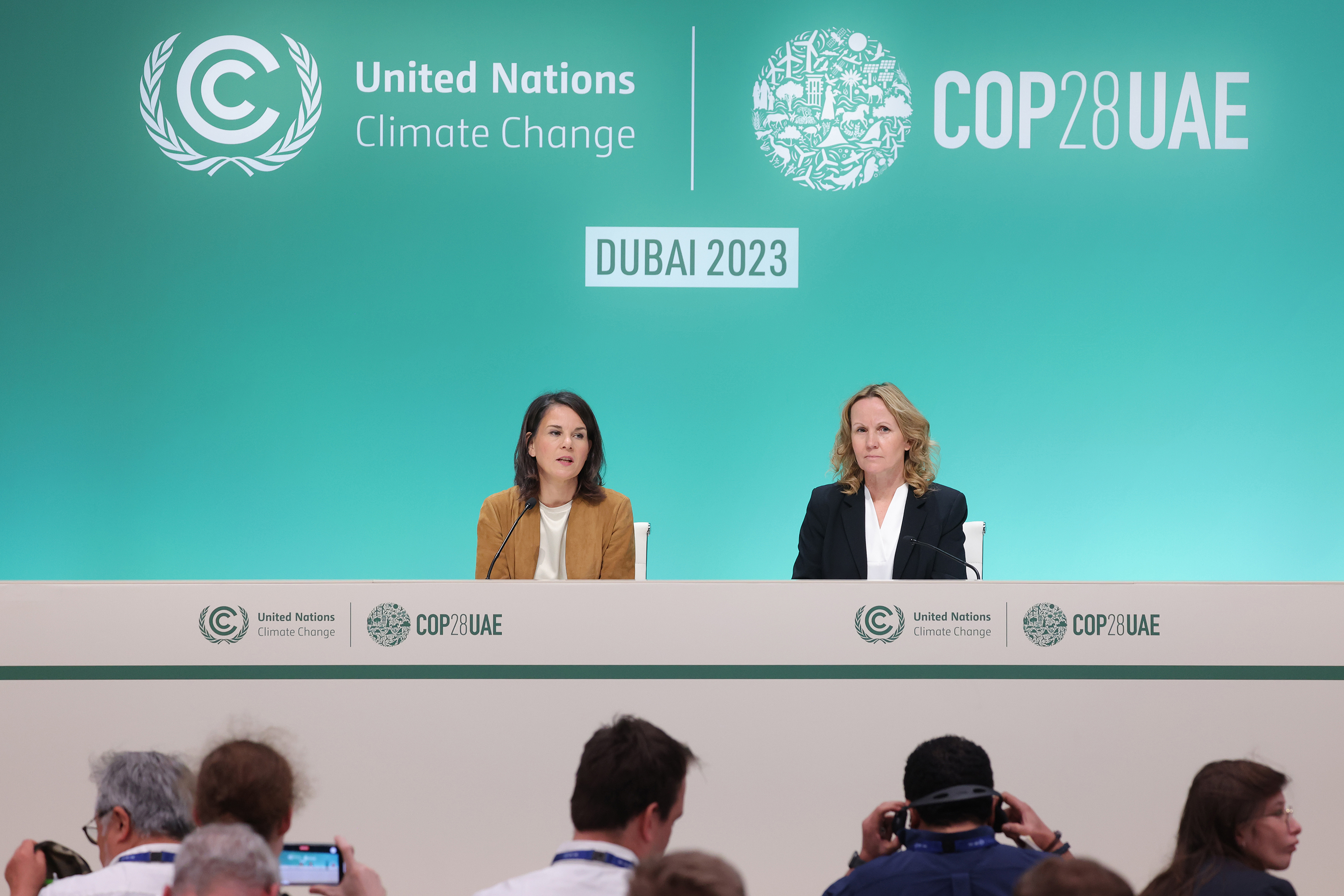
German Foreign Minister Annalena Baerbock (left) and German Environment Minister Steffi Lemke speak to the media at the UNFCCC COP28 Climate Conference on 10 December 2023 in Dubai, United Arab Emirates. (Photo: Sean Gallup / Getty Images)
Pereira agreed, saying, “Once we get it on paper and have finance for it, we need to be able to implement it and our citizens need to be able to hold the government to account for delivery.”
Sandeep Chamling Rai, the WWF senior adviser for global climate adaptation policy, said: “The Global Goal on Adaptation latest draft is still missing some crucial elements, despite some improvements. Vulnerable communities desperately need more finance to build resilience to the impacts of the climate crisis. However, the text only reiterates the longstanding call for developed countries to double adaptation finance without providing a clear roadmap to deliver it. The text is also missing concrete global targets.
“For a credible outcome, negotiators must agree on an overall finance target for adaptation and how developed countries can meet their previous commitments to double climate adaptation finance.
“With some improvements, this text could provide a solid outcome that can help accelerate adaptation efforts on the ground that can shield people and ecosystems from the consequences of rising temperatures.”
Developed and developing countries at odds
“I think the biggest concern at the moment is that negotiators across the board are not willing to take on the theme targets because of the financial implications attached to them,” Pereira said.
Along with the “theme targets”, which are ambitious, time-bound and outcome-based, the text also has “dimension targets”, which are mostly focused on making plans and tracking progress.
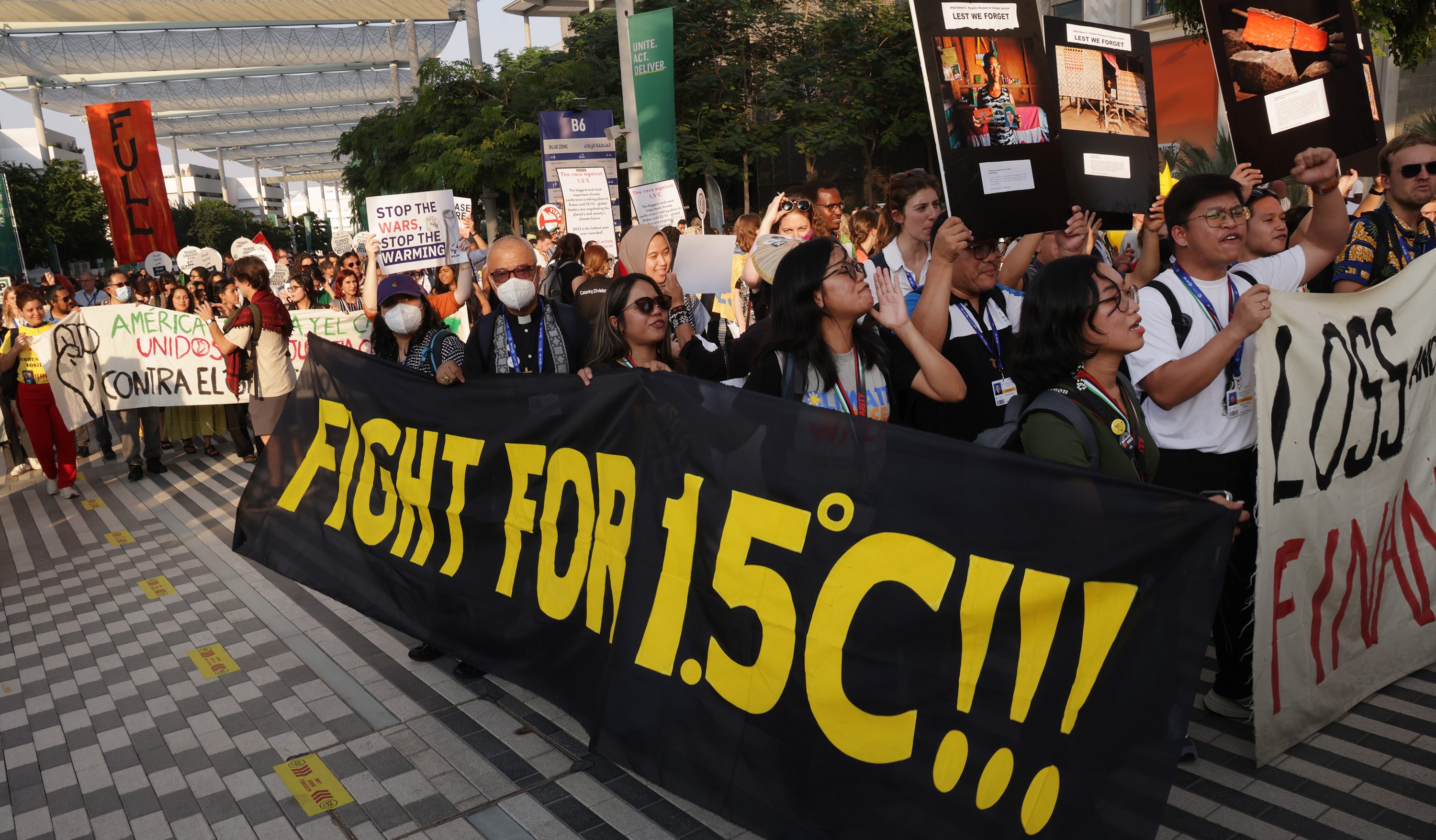
Activists protest on day nine of the UNFCCC COP28 Climate Conference at Expo City Dubai on 9 December 2023. (Photo: Sean Gallup / Getty Images)
Pereira said at these negotiations, the Global North seemed focused on the dimension targets, “because these are the sorts of things where you’re not going to have to put as much financial backing behind this because it is really about process”.
The Global South had been pushing for the theme targets. “These are much more specific, they’re ambitious, and they’re time-bound, so they will have financial implications to achieving them,” Pereira said.
But, as Pereira noted, humanity needs to commit to — and reach — these targets.
“Why adaptation is so important is it also prevents a whole bunch of non-economic damages,” Trisos said.
“In the end, we’re talking about people’s lives — what price is the nearly 500 people’s lives that were lost in the Durban floods? It’s about saving lives, is the way I look at it.” DM
Read more in Daily Maverick: COP28 news hub



















 Become an Insider
Become an Insider
COP28 = cop out no 28